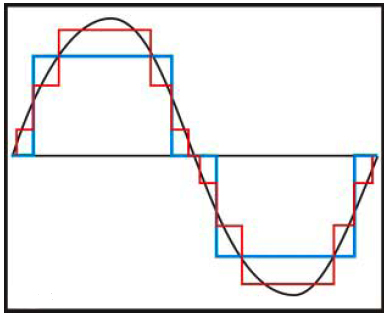Please Recommend me a UPS
4 hours ago, ATFink said:What's wrong with that? I don't know so links or somewhere I can start looking? Plus wouldn't the PSU take care of the input wave as long as its fairly consistent?
there's a few things UPSes can do to "simulate" an actual pure sine wave like produced by a generator, here organised by cost of implementing and quality of signal:
- simulated sinewave, which is essentially just "turnin on and off DC power" 100 or 120 times per second (for 50 or 60Hz, once positive, once negative) and keeping them on for the same "duty cycle" as a sine wave would have (so for example a fillament light bulb would consume the same wattage). this is only really suitable for stuff like light bulbs, your vaccuum cleaner, and very unsensitive devices.
- stepped approximation, which is basicly the same concept as the last one, except it has "steps" instead of just on or off, and it can progressively step up and down to come to what is essentially a very low quality sine wave. the output singal of this is comparable to what you'd get on a very low quality cable with lots of devices doing all kinds of things they really shouldnt, etc. while it's certainly not perfect, it is deemed acceptable for most devices aside from the absolute most sensitive ones. and is also MUCH more mainstream affordable than better solutions.
- pure sine, which as the name sates, is essentially another "step" on top of the last one, which also contains the extra hardware to "smooth" out the nasty sine wave into a nice curve, this is essentially only affordable for the big guys tho. i doubt you'll even find these at all on consumer market in india (where OP mentioned he's from) let alone be affordable.
in image form: a pure sinewave (black), a stepped approximation (red) and a simulated sinewave (blue)

















Create an account or sign in to comment
You need to be a member in order to leave a comment
Create an account
Sign up for a new account in our community. It's easy!
Register a new accountSign in
Already have an account? Sign in here.
Sign In Now